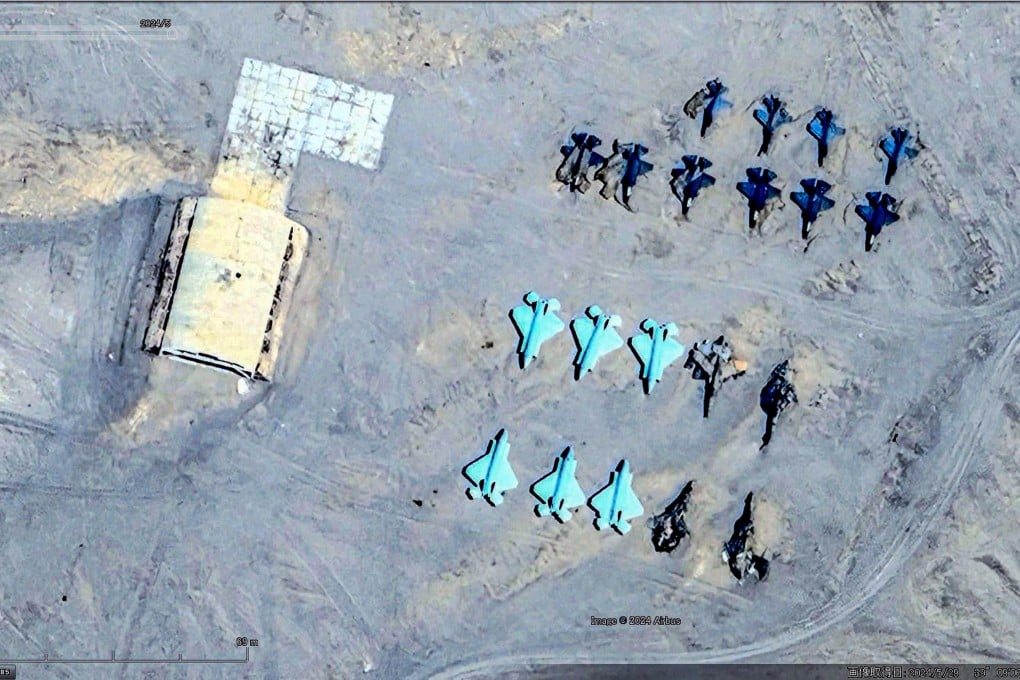Satellite images suggest China has been practising for strikes on US jets
- Pictures published online suggest PLA has been practising strikes on stealth fighters and aircraft carriers

The images, taken by Google Earth on May 29, feature a model aircraft carrier and more than 20 replicas of jets resembling US stealth fighters.
“Chinese PLA Air Force pilots are learning to practice air strikes on American F-35 and F-22 mock-ups,” said a post containing four satellite pictures published on X, formerly Twitter, by the Turkey-based Clash Report.
The military blogging account identified the location as Qakilik in the Taklamakan Desert. The Post has not been able to verify the images and there has been no official confirmation from China.
Several of these replicas appeared to be severely damaged.
The exercises reflect the People’s Liberation Army’s efforts to build up its long-range ballistic and cruise missile systems to neutralise the threats from US naval forces, according to Collin Koh, a research fellow at the S. Rajaratnam School of International Studies in Singapore.